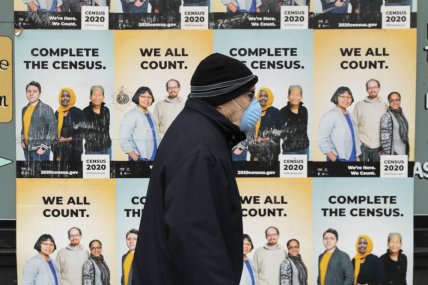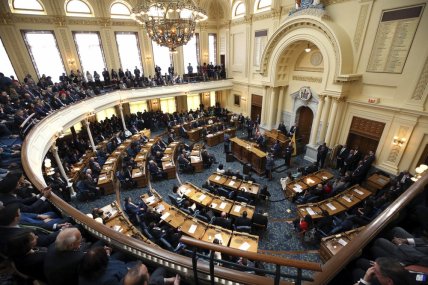White population in U.S. declines for first time in history
The racial breakdowns from the 2020 Census will be reported this week
The number of white people in the U.S. is reportedly on the decline as population growth in the county is being driven by people of color.
The racial breakdowns from the 2020 Census will be reported this week, noting that for the first time in the history of the country’s census taking, the number of white people in the United States is shrinking, The Washington Post reports.

“Twenty years ago if you told people this was going to be the case, they wouldn’t have believed you,” said William Frey, a demographer at the Brookings Institution.
Frey believes the decline of the white race in America can partly be attributed to the opioid epidemic and lower birth rates among millennials.
“The country is changing dramatically,” he added.
Since the 2010 census, the U.S. Census Bureau’s annual updates have estimated that the nation’s white population is not growing at the rate of non-whites. Additionally, the population of people under 18 is estimated to have declined in 31 states.
For the first time, the white population could drop below 60%, with a majority of the population under 18 being non-white.
Frey calls the shift a “cultural generation gap.”

The shift was evident in 2011 when more non-white babies were born than white babies. The birth rates among Hispanic, Asian, and multiracial people in the nation have boomed over the past two decades, per the report.
“People haven’t recognized that Latinos are changing the face of the nation,” said Arturo Vargas, chief executive of the Latino advocacy group NALEO Educational Fund. “There is a meaningful and significant Latino population in virtually all states, except maybe Vermont, New Hampshire and Maine. … What I would hope is that policymakers begin looking at their decisions about resource allocation and other policies through a Latino lens.”
The Hispanic population in California, for instance, is estimated to have increased by 11% or 1.5 million people, since 2010, according to the report.
“If it’s Latinos who made it grow then that district shouldn’t be lost in a Latino area,” Vargas said. “The future we’re facing is increasingly brown.”
Hispanics are reportedly flocking to areas with industries that attract Latino workers, such as Kansas, the Philadelphia metro area, Miami-Dade County, and Prince George’s County, Maryland, according to the report.
“We know people migrate to where there are economic opportunities,” Vargas said. “In cities in Kansas …the meatpacking industry was kept going because of Latino workers.”
“You’ve got an aging white electorate that does not seem to be willing to make the investments in a young population that propels people to success — schools, infrastructure,” Manuel Pastor, a sociology professor at the University of Southern California told The Associated Press. “There’s a portion of the population — myself included — who’s delighted by Korean taco trucks popping up …But, on the other hand, there are people who feel a great dislocation and loss of personal identity.”
The new Census Bureau data will be released on Aug. 12, and it comes amid concerns over its accuracy.
“I fear an undercount of people of color because of the way the census was conducted,” said Marc Morial, president and chief executive of the National Urban League. “It was politicized from the very beginning by the Trump administration, notwithstanding the valiant efforts by the Census Bureau to push back on that politicization.”
Morial’s organization sued the government for ending the census count earlier than planned.
Per The AP, the census arrives this week more than four months late due to delays caused by the COVID-19 pandemic.
Have you subscribed to theGrio’s “Dear Culture” podcast? Download our newest episodes now!
TheGrio is now on Apple TV, Amazon Fire and Roku. Download theGrio.com today!
More About:Featured











